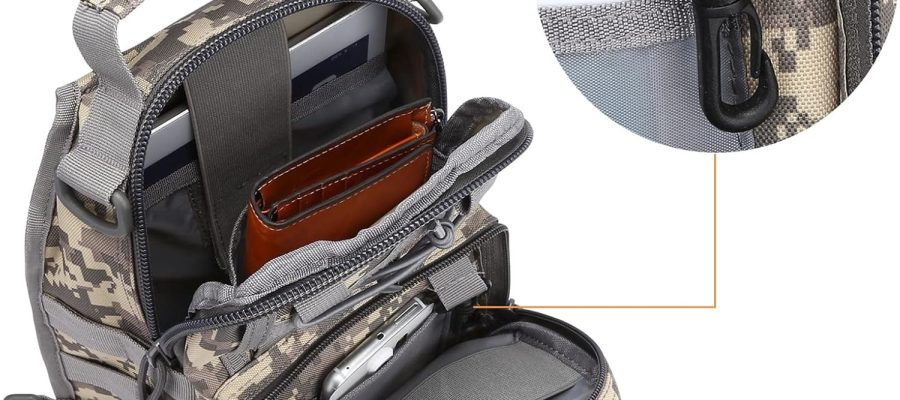Introduction to Tactical Sling Bags
A tactical sling bag is a versatile, function-driven accessory designed to meet the demands of modern lifestyles, blending military-inspired practicality with everyday usability. Its core appeal lies in its ergonomic design, which prioritizes comfort and accessibility. Typically featuring adjustable shoulder straps and quick-release buckles, it allows users to transition seamlessly between activities—from hiking trails to urban commutes—without sacrificing mobility. The bag’s modular compartments and exterior loops enable efficient organization of essentials like keys, wallets, tools, and even emergency supplies. Unlike traditional backpacks, tactical sling bags emphasize minimalist aesthetics and lightweight construction, making them ideal for those who value portability.
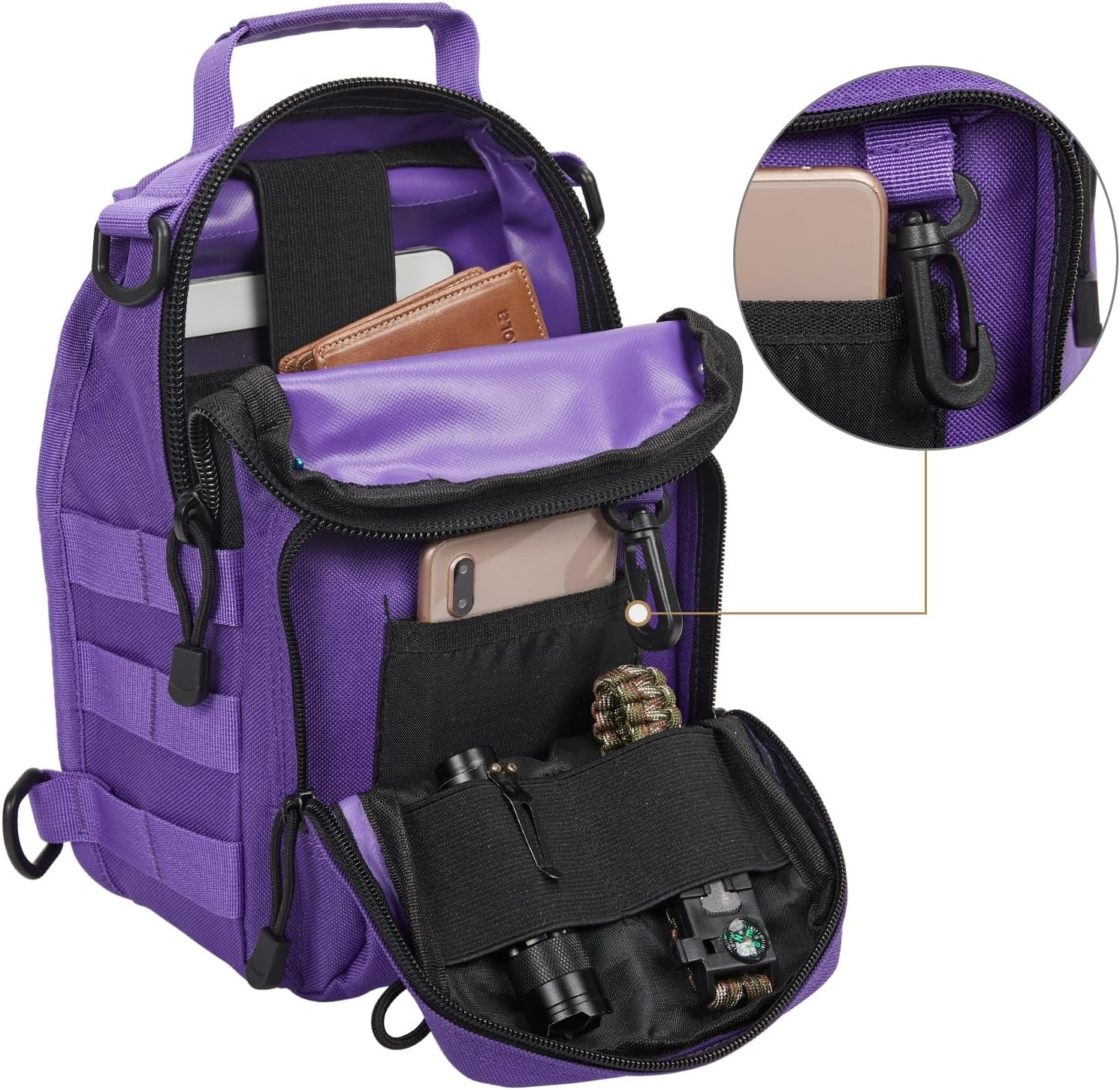
Originally developed for tactical scenarios such as military operations or outdoor survival, these bags have evolved to cater to civilians seeking reliability. Key advantages include rapid access to contents, customizable fit, and durability against wear and tear. Whether for adventure, work, or daily tasks, a tactical sling bag serves as a discreet yet powerful companion, adapting to diverse needs while maintaining a sleek profile.
Key Features of a High-Quality Tactical Sling Bag
When selecting a tactical sling bag, certain features distinguish a premium product from a mediocre one. Below are the essential characteristics that define a high-quality tactical sling bag:
1. Durable, Weather-Resistant Materials
A top-tier tactical sling bag is constructed from ballistic nylon, polyester, or Cordura® fabric, which are renowned for their abrasion resistance and longevity. These materials withstand scratches, tears, and exposure to harsh environments. Waterproof coatings (such as TPU or PU finishes) further protect contents from rain, while reinforced stitching at stress points ensures structural integrity even under heavy loads.
2. Modular Organization System
The bag’s multi-compartment design allows users to customize storage for specific needs. Key elements include:
- Quick-access pockets: Zippered or magnetic closures for phones, wallets, or keys.
- MOLLE/PALS webbing: Attach external pouches, hydration bladders, or tools.
- Hidden security pockets: Anti-theft zippers or RFID-blocking lining for valuables.
- Internal dividers: Adjustable inserts to separate items like laptops or tablets.
3. Ergonomic Comfort Features
Comfort is critical for prolonged use. Look for:
- Adjustable, padded shoulder straps with breathable mesh padding to reduce pressure.
- Crossbody carrying options to shift weight distribution and enhance stability.
- Waist clips or sternum straps to secure the bag during movement.
4. Versatile Carry Options
A high-quality tactical sling bag adapts to diverse scenarios:
- Shoulder sling mode: Ideal for quick transitions or hands-free mobility.
- Crossbody mode: Reduces theft risk in crowded areas.
- Handheld grip: Some models include a top handle for easy lifting.
5. Military-Grade Durability
Robust hardware, such as YKK zippers, D-rings, and reinforced buckles, ensures reliability. Abrasion-resistant finishes on high-contact areas prevent wear from rough surfaces.
6. Smart Functional Add-Ons
Premium bags often include thoughtful extras:
- Key clip attachments inside the main compartment.
- Integrated flashlight holders or pen slots for quick access.
- Reflective strips for nighttime visibility.
7. Lightweight yet Compact Design
Despite its features, a quality tactical sling bag prioritizes lightweight construction (typically 1–3 lbs empty) and collapsible storage for easy packing. Its streamlined shape avoids bulkiness while maximizing capacity.
Why These Features Matter
These attributes collectively ensure that a tactical sling bag remains dependable, urban commuting, or emergency scenarios. By prioritizing durability, organization, and comfort, it becomes an indispensable tool for users who demand reliability without compromising style or practicality.
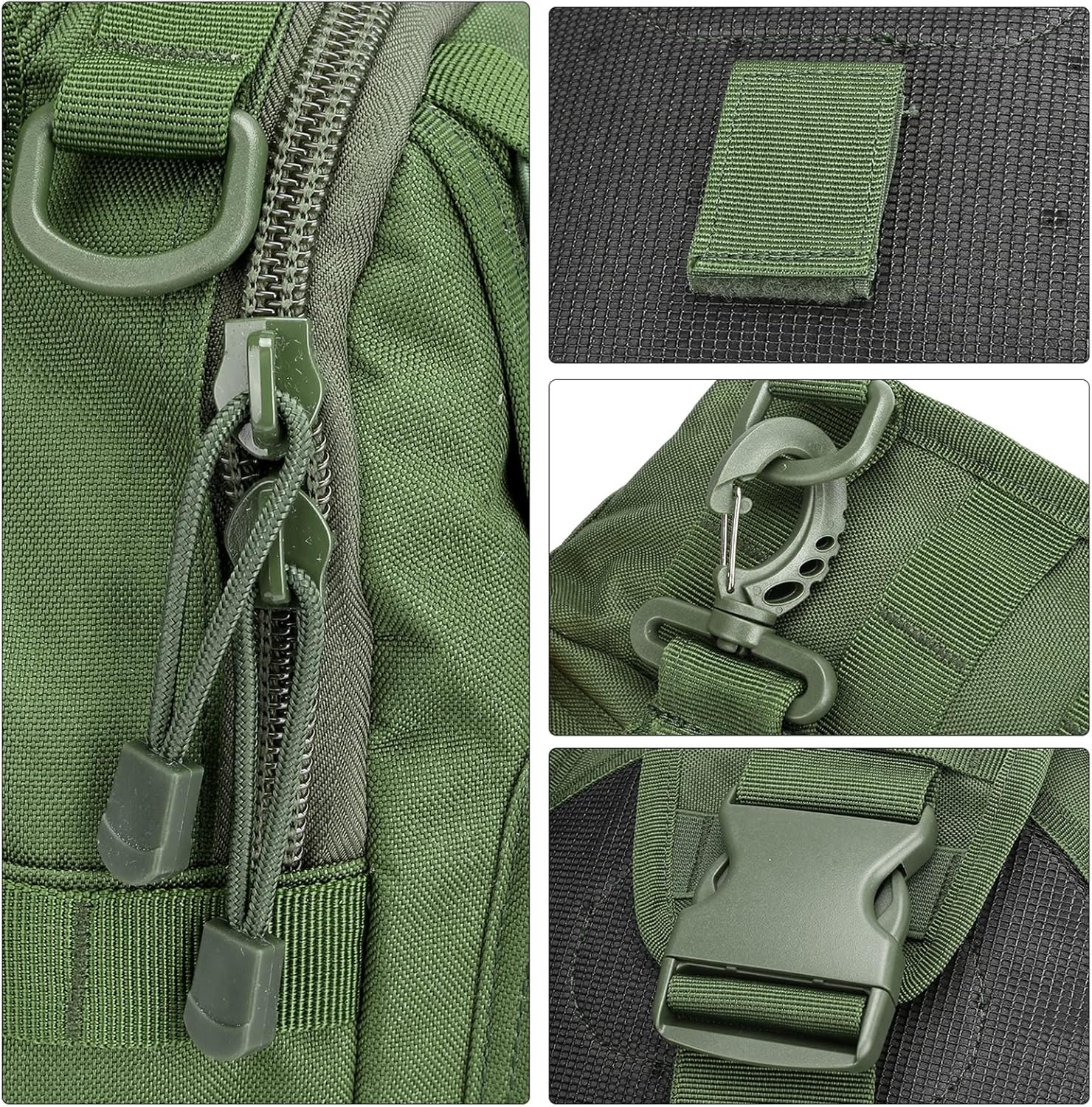
Versatile Use Cases for Tactical Sling Bags
A tactical sling bag’s adaptability makes it a go-to accessory for diverse scenarios. Its modular design and compact size allow users to tailor it to specific needs across outdoor adventures, urban settings, and emergency situations. Below are its most common—and creative—applications:
1. Outdoor Expeditions
For hikers, campers, or hunters, a tactical sling bag serves as a lightweight gear carrier. It can hold essentials like first-aid kits, navigation tools, water purification tablets, and emergency blankets. The MOLLE webbing accommodates hydration bladders or trekking pole attachments, while waterproof materials protect gear from rain or mud.
2. Urban Commuting
In cities, the bag’s discreet profile and quick-access pockets make it ideal for daily tasks. Store a laptop, documents, or a portable charger while moving through crowds. The crossbody carry design reduces theft risk, and hidden pockets keep valuables secure. It’s equally suited for coffee runs or meetings, blending functionality with a sleek appearance.
3. Emergency Preparedness
Its hidden compartments and durability make it a reliable emergency kit carrier. Fill it with flashlights, emergency food rations, medical supplies, and a compact multitool. The bag’s portability ensures it’s always within reach during power outages, natural disasters, or unexpected disruptions.
4. Fitness and Sports
For workouts or outdoor activities, the bag holds sports attire, water bottles, or sports nutrition bars. Its padded shoulder strap prevents discomfort during runs, while breathable materials keep contents cool. Some models even include hydration bladder compatibility for marathon training or cycling.
5. Travel and Exploration
When traveling, a tactical sling bag acts as a carry-on companion. Its compact size fits airline restrictions, and organizational pockets keep passports, tickets, and currency separate. The water-resistant exterior protects against spills or sudden rainstorms.
Why Versatility Matters
A tactical sling bag’s ability to transition between these roles sets it apart from traditional bags. Whether you’re scaling a mountain or navigating a city, it adapts to your priorities—security, efficiency, or preparedness—without sacrificing style.
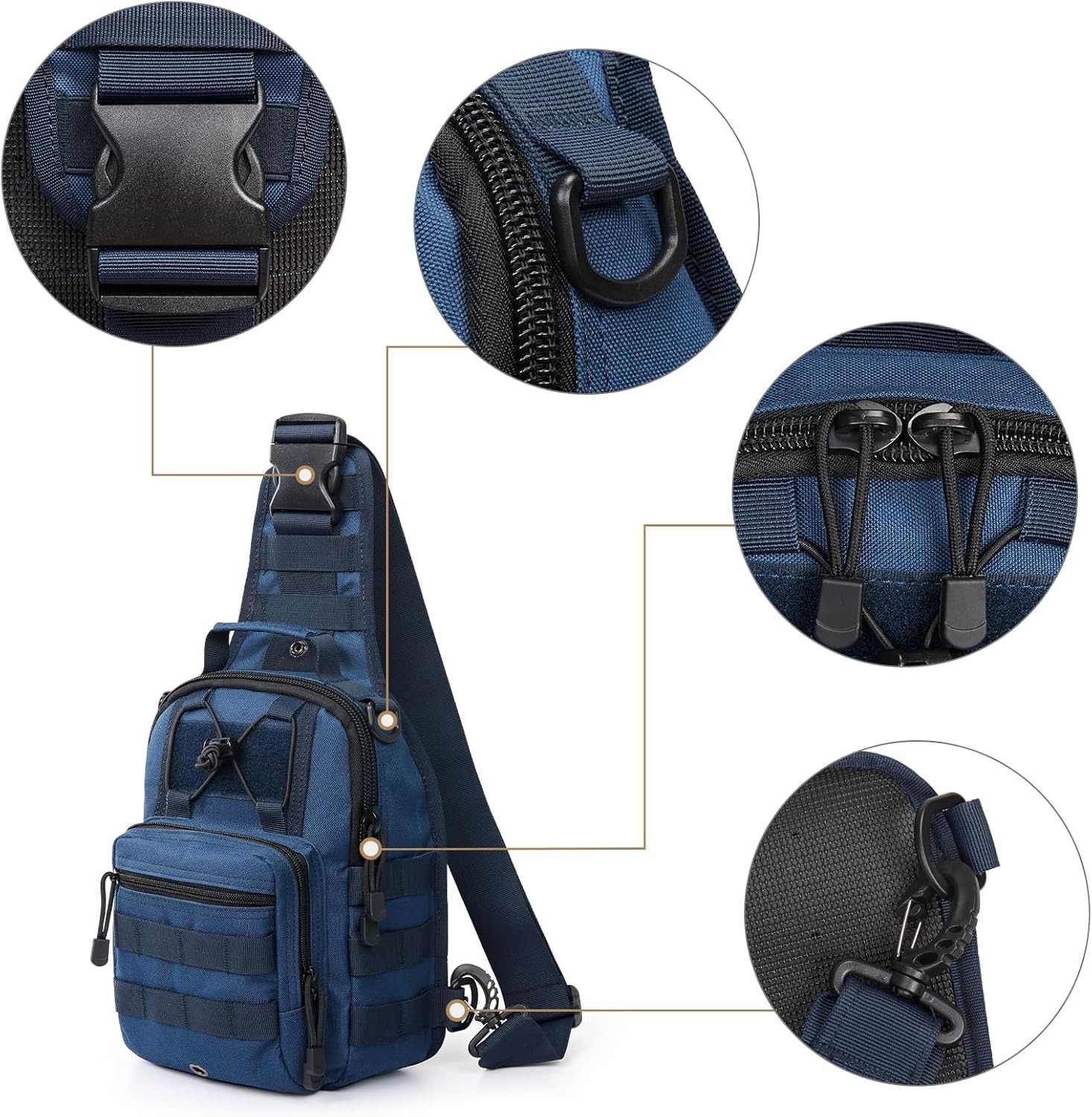
Choosing the Right Tactical Sling Bag: Tips and Considerations
Selecting the ideal tactical sling bag requires balancing your priorities with the bag’s features. Follow these key considerations to ensure you choose a bag that aligns with your needs:
1. Define Your Primary Use Case
Ask yourself: What’s the main purpose?
- Outdoor adventurers need water-resistant materials and MOLLE webbing for gear attachment.
- Urban users prioritize hidden pockets, quick-access zippers, and a discreet design.
- Emergency preparedness-focused buyers should prioritize durable hardware and secure compartments for critical supplies.
2. Assess Capacity Needs
Choose the size based on daily demands:
- Small (10–20L): Ideal for essentials like a phone, wallet, and keys.
- Medium (20–30L): Suitable for daily commutes or short trips.
- Large (30L+): For multi-day adventures or heavy gear.
3. Material and Durability
Opt for ballistic nylon or Cordura® fabric for abrasion resistance. Check for:
- Waterproof coatings (critical for rainy climates).
- Double-stitched seams and heavy-duty zippers.
- Reinforced bottom panels to withstand rough terrain.
4. Comfort and Fit
Ensure the bag’s ergonomics match your body:
- Shoulder strap width and padding reduce strain during long carries.
- Adjustable straps allow customization for different torso lengths.
- Test the bag’s weight distribution to avoid imbalance.
5. Brand Reputation and Reviews
Research brands known for quality craftsmanship, such as 5.11, Tactical Tailor, or Outdoor Research. Read reviews focusing on:
- Customer satisfaction with design and functionality.
6. Budget and Add-Ons
- Entry-level (50–100): Basic features for casual use.
- Mid-range (100–200): Durable materials and modular pockets.
- Premium ($200+): Ultra-durable fabrics, advanced organizational systems, or specialized tech (e.g., RFID-blocking).
Final Tip
Prioritize versatility—a bag that adapts to multiple scenarios offers the best value. Always inspect the bag’s weight (empty vs. loaded) and ease of access to contents.
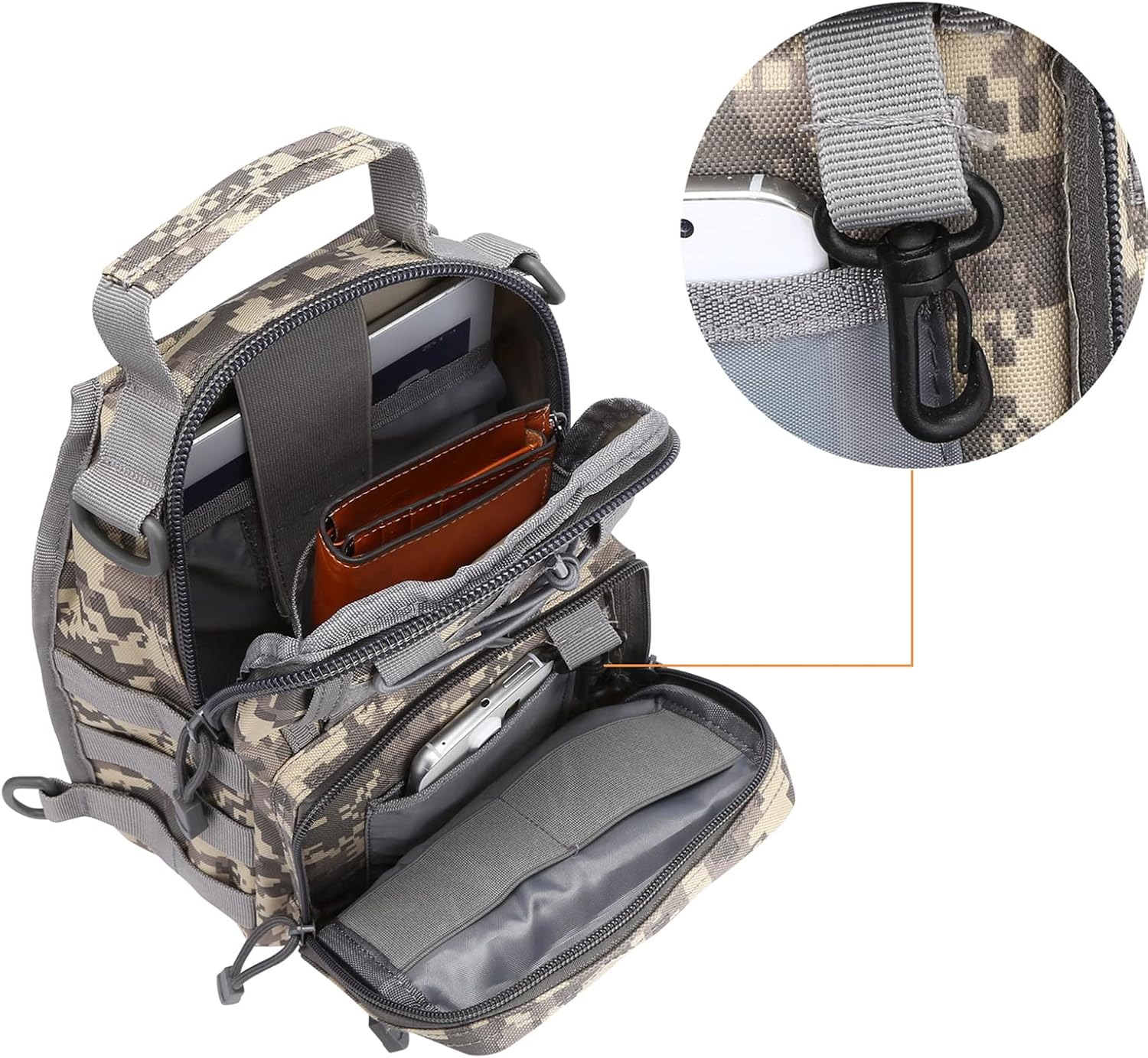
Durability and Material Innovations in Modern Tactical Sling Bags
Modern tactical sling bags leverage cutting-edge materials and engineering to enhance longevity and performance. Key innovations include:
1. Advanced Fabric Technologies
- Ballistic nylon and Cordura® 1000D/500D dominate due to their abrasion resistance and lightweight strength, withstanding tears from rough terrain or heavy loads.
- Waterproof coatings like TPU (Thermoplastic Polyurethane) or PU (Polyurethane) repel rain and spills, while hydrophobic finishes on fabrics resist stains.
2. Reinforced Structural Design
- Double-stitched seams and heat-sealed edges prevent fraying, even under stress.
- Metallic hardware replaces plastic components for durability in extreme conditions.
3. Eco-Friendly Materials
Some brands now use recycled polyester or vegetable-tanned leather to reduce environmental impact without sacrificing quality. For example, Patagonia integrates recycled nylon to create bags that are both rugged and sustainable.
4. Smart Layering Techniques
- Multi-layered fabrics combine waterproof outer shells with breathable linings for comfort in varied climates.
- Anti-microbial treatments inhibit odor buildup from sweat or moisture, ideal for prolonged use.
How to Maximize Comfort and Functionality
To get the most out of your tactical sling bag, follow these strategies to enhance both comfort and usability:
1. Optimize Weight Distribution
- Position heavy items close to your body: Place laptops, books, or tools near the center of the bag to reduce strain on your shoulders.
- Use the waist clip or sternum strap (if available) to transfer weight from the shoulders to the hips or torso.
2. Leverage Organizational Features
- Utilize internal dividers: Separate items like electronics, documents, and snacks to prevent jumbling.
- Assign pockets strategically:
- Quick-access pockets for keys or wallets.
- Hidden compartments for valuables like passports.
- External loops for water bottles or tools.
3. Customize with Accessories
- Add pouches or inserts: Use MOLLE/PALS webbing to attach hydration bladders, first-aid kits, or modular pouches.
- Use compression straps: Tighten loose straps to reduce swaying during movement.
4. Rotate Carry Methods
- Alternate between shoulder sling, crossbody, and handheld modes to avoid muscle fatigue.
- For long hikes, switch to a backpack-style carry if the bag allows dual configurations.
5. Maintain Cleanliness and Structure
- Wipe down zippers and buckles regularly to ensure smooth operation.
- Avoid overloading the bag to prevent distortion of the fabric shape.
Why This Matters
Proper adjustments and organization turn a tactical sling bag into an extension of your mobility. By minimizing discomfort and maximizing accessibility, you’ll enjoy seamless transitions between activities—from work to adventure—without compromising efficiency.
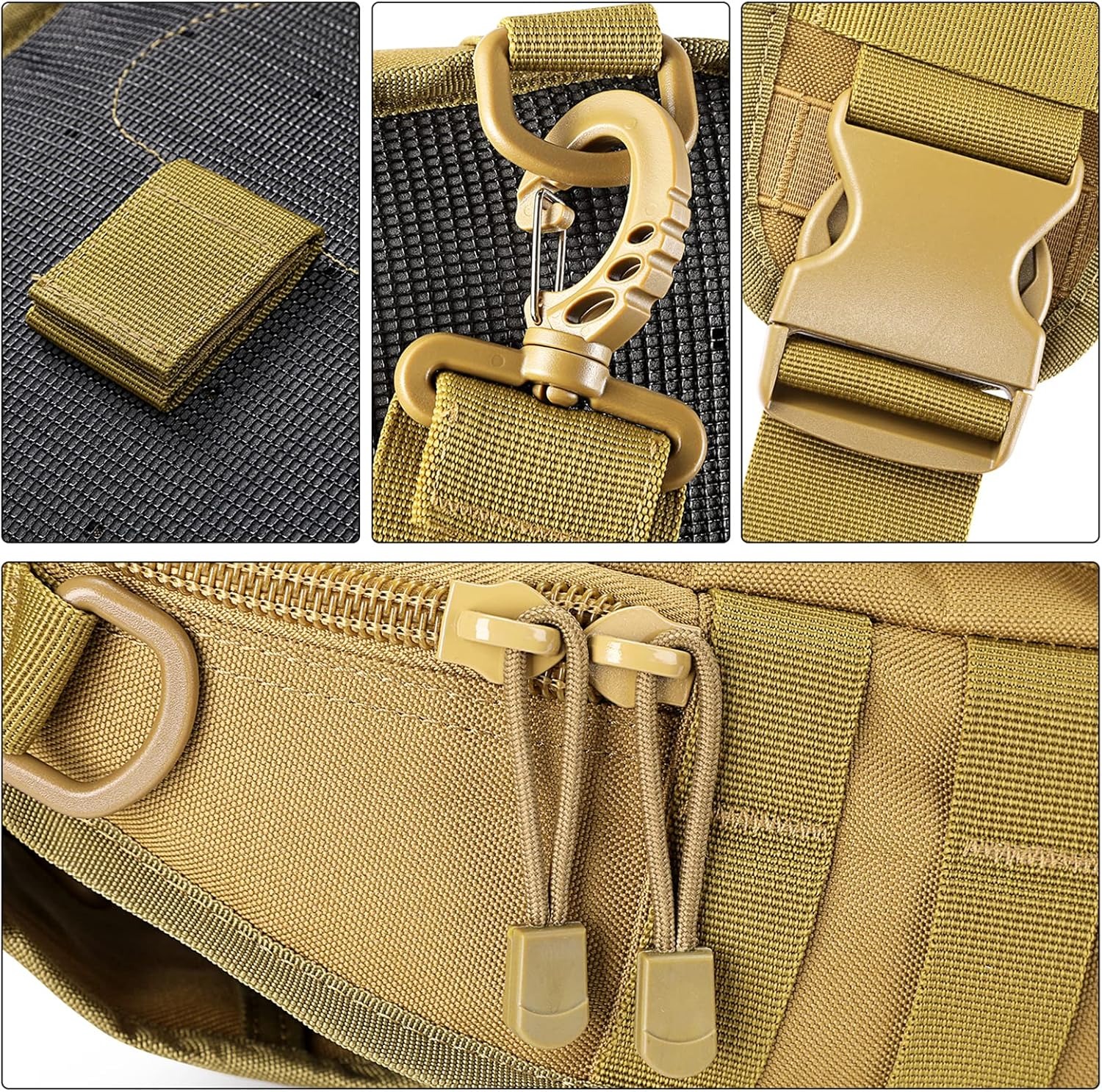
Comparing Tactical Sling Bags with Traditional Backpacks
While both tactical sling bags and traditional backpacks serve as carriers, their designs cater to distinct needs. Here’s a breakdown of their key differences to help you choose the right option:
1. Portability and Comfort
- Tactical Sling Bag:
- Lightweight and compact: Ideal for quick trips or hands-free mobility.
- Adjustable straps distribute weight closer to the body for reduced shoulder strain.
- Crossbody mode keeps the bag secure in crowded areas.
- Traditional Backpack:
- Sturdier frames (e.g., padded back panels) support heavier loads but may feel bulky.
- Fixed shoulder straps can cause discomfort over long periods without ergonomic adjustments.
2. Capacity and Storage
- Tactical Sling Bag:
- Smaller volume (10–30L): Prioritizes essentials like phones, wallets, or tools.
- Modular pockets (e.g., MOLLE webbing) for quick-access gear but limited bulk storage.
- Traditional Backpack:
- Larger capacity (20–50+L): Accommodates laptops, books, or multi-day gear.
- Structured compartments for organized packing but less flexibility for on-the-go access.
3. Design and Functionality
- Tactical Sling Bag:
- Military-inspired aesthetics: Sleek, utilitarian look with hidden pockets for discreet use.
- Rapid access: Zippered or magnetic closures let you retrieve items without removing the bag.
- Traditional Backpack:
- Varied styles (e.g., hiking, school, travel).
- Top-loading design requires unzipping to access contents, which can be inconvenient during movement.
4. Ideal Use Cases
- Tactical Sling Bag:
- Urban commuting, short hikes, or emergency preparedness.
- Perfect for: Those prioritizing speed, stealth, and minimalism.
- Traditional Backpack:
- School, long-distance travel, or heavy gear transport (e.g., camping).
- Best for: Users needing to carry bulky or heavy items.
5. Price and Maintenance
- Tactical Sling Bag:
- Mid-range pricing (50–200) for durable materials but limited storage.
- Easy to clean due to fewer compartments.
- Traditional Backpack:
- Varies widely (e.g., 30basicmodelsto200+ premium gear).
- Complex maintenance due to zippers, straps, and internal linings.
Which Should You Choose?
- Pick a tactical sling bag if you prioritize agility, quick access, or urban mobility.
- Choose a traditional backpack for heavy loads, long trips, or structured organization.
Maintenance and Longevity of Your Tactical Sling Bag
Proper care ensures your tactical sling bag remains functional and durable for years. Follow these maintenance tips to extend its lifespan:
1. Regular Cleaning
- Spot clean stains with a damp cloth and mild soap (e.g., diluted dish soap). Avoid harsh chemicals that degrade fabric.
- Air-dry completely after exposure to water; never use a dryer, as heat can warp materials.
- Wipe down zippers and buckles with a microfiber cloth to prevent dirt buildup.
2. Storage Practices
- Store in a cool, dry place away from direct sunlight to prevent fabric fading or stiffness.
- Avoid overstuffing when not in use; excess pressure can distort the bag’s shape.
- Fold or hang instead of cramming into a drawer to maintain structural integrity.
3. Repair Small Issues Promptly
- Reinforce loose threads with a needle and matching thread before they become tears.
- Replace worn zippers using compatible hardware (e.g., YKK replacements).
- Patch minor tears with fabric glue or sew-on patches designed for tactical gear.
4. Avoid Overloading
- Check weight limits (typically listed on the bag’s label). Exceeding capacity strains stitching and hardware.
- Distribute weight evenly to prevent stress on specific areas (e.g., bottom or straps).
5. Protect from Environmental Damage
- Use a rain cover during heavy downpours to prevent waterlogging.
- Avoid abrasive surfaces (e.g., rough terrain) when placing the bag on the ground.
Why This Matters
Neglecting maintenance can lead to premature wear, such as frayed straps or broken zippers. By following these steps, your tactical sling bag remains a reliable companion for outdoor adventures, daily commutes, or emergency scenarios.
